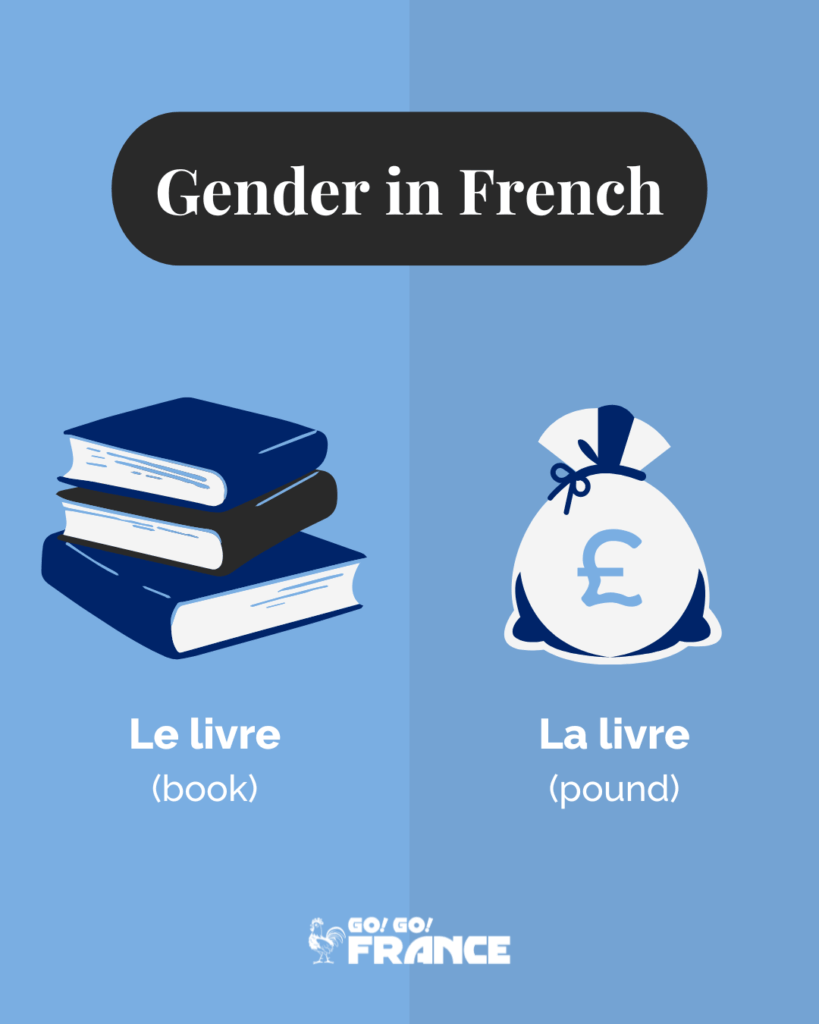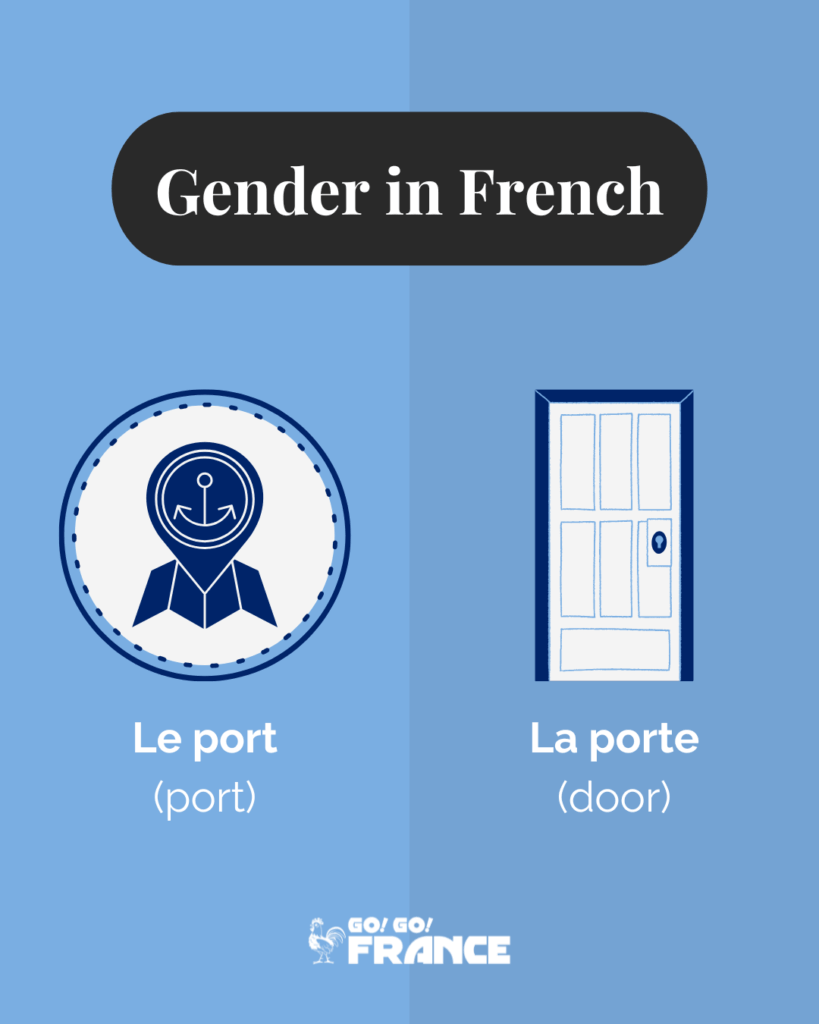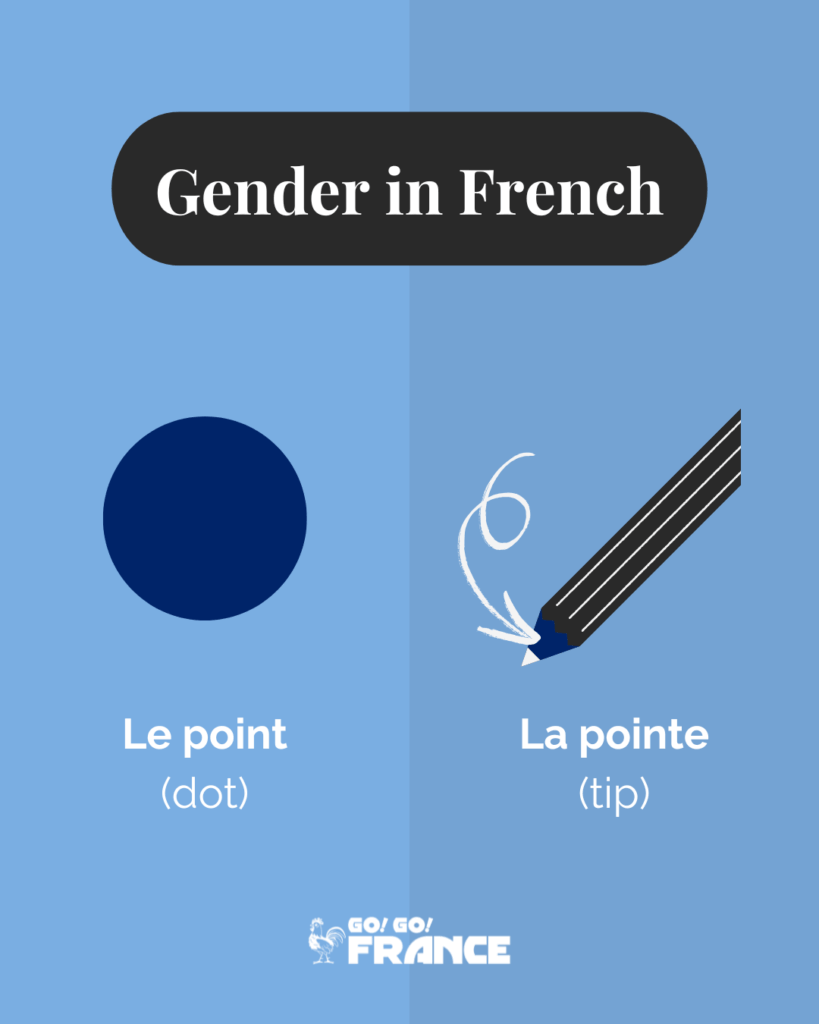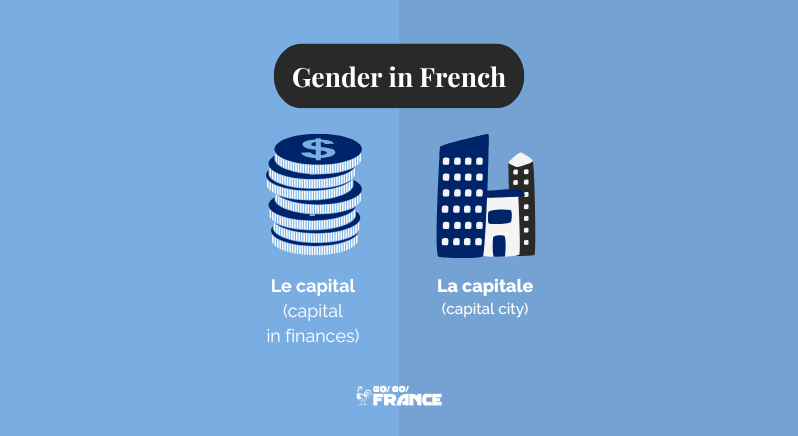Learning French means becoming familiar with French gender rules.
Every noun is either masculine or feminine, which can be tricky at first, but recognizing common patterns makes it much easier.
What does gender mean in French grammar
In French, every noun is either masculine or feminine, and this affects almost every part of the sentence.
French gender determines not only which article you use before the noun (le/la, un/une) but also how adjectives and sometimes verbs are formed. For example, un petit garçon (a small boy) and une petite fille (a small girl) differ in both article and adjective.
Even native speakers sometimes hesitate. For example, un après-midi or une après-midi (afternoon) are both used in everyday French, but the Académie Française, France’s official language authority, recognises only the masculine form.
Why gender matters when speaking French
Using the correct gender makes your French sound natural and prevents misunderstandings.
Choosing the wrong gender can change a sentence’s meaning or simply make it sound awkward. For example, le livre (the book) and la livre (the pound, as in currency or weight) are different words. Using the correct gender is important because it affects the rest of your sentence.

How to identify masculine & feminine nouns in French
There is no universal rule, and you’ll often be told that you just have to memorise them, as all French kids do. Still, there are common patterns in word endings that can guide you.
Common feminine noun endings in French
Many feminine nouns end in -e, -tion or -sion, -té, and -ure.
For example:
- -e: la voiture (car), la pomme (apple), la plage (beach)
- -tion or -sion: la solution (solution), la télévision (television), la discussion (discussion)
- -té: la liberté (freedom), la beauté (beauty), la santé (health)
- -ure: la culture (culture), la peinture (painting), la fermeture (closing)
- -eur: la chaleur (heat), la peur (fear), la couleur (color)
Common masculine noun endings in French
Masculine nouns often end in -ment, -age, and -isme.
For example:
- -ment: le gouvernement (government), le bâtiment (building), le paiement (payment)
- -age: le fromage (cheese), le voyage (trip), le paysage (landscape)
- -isme: le tourisme (tourism), le réalisme (realism), le capitalisme (capitalism)
That said, this trick doesn’t work every time, and you’ll always find counterexamples. Even though it’s a useful trick to know, the best habit you can develop is to learn each noun together with its article. For example, don’t learn that livre means book, but that le livre means a book.

How masculine & feminine nouns are formed in French
Many French nouns form their feminine counterparts simply by adding -e to the masculine form and changing the article before the noun. For example, un apprenti (a trainee) becomes une apprentie (a trainee).
Learning the different articles and their masculine and feminine versions is very useful:
| Masculine Article | Feminine Article |
|---|---|
| le | la |
| un | une |
| du | de la |
| ce / cet | cette |
| mon / ton / son | ma / ta / sa |
| les | les |
| mes / tes / ses | mes / tes / ses |
However, for many words, simply adding -e and changing the article creates a completely different meaning. For example, le port (port) and la porte (door), or le point (dot) and la pointe (tip).

Do French names also have gender?
Most French names have masculine and feminine counterparts, often formed by changing the ending.
Many feminine names add -e, -ine, -ette, or -ie to the masculine name. For example, Joseph becomes Joséphine, and Louis becomes Louise.
| Masculine Name | Feminine Name |
|---|---|
| Jean | Jeanne |
| Paul | Paule |
| Julien | Juliette |
| François | Françoise |
| Joseph | Joséphine |
| Henri | Henriette |
| Louis | Louise |
How to master French gender rules
French gender rules may seem confusing at first, but immersion is the best way to master them. By living and studying in France, you’ll naturally absorb how gender rules work through daily use. Contact us to find out how we can help you live and study in France.
Follow our Go! Go! France blog for more useful language tips, cultural insights, and study opportunities in France.



